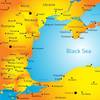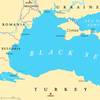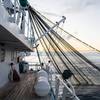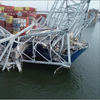Van Oord Develops Deep Excavation System
Stretching across oceans and continents, approximately 32,000 km of new pipelines are constructed each year forming an industry worth $28 billion. The installation of pipelines on the seabed require engineers to develop innovative technologies and methods to inspect, repair and maintain pipelines at depths sometimes reaching 1,000m. The Deep Excavation System (DES) is a new, cost-saving technique designed for dredging at great water depths for use in the offshore pipeline industry.
For new laid pipelines, large changes in seabed height can create free spans which can lead to stresses in the pipe. For decades, Subsea Rock Installation (SRI) has been the traditional approach for seabed preparation where dips and hollows are filled with crushed rock (installed by Fall Pipe Vessels) to support the pipeline and avoid these free spans.
For the stabilization and protection of offshore pipelines, cables and other installations, SRI is a vital process for these subsea industries. While rock installation is a proven technique, new methods and innovative technology are still needed to reduce costs, especially as the industry moves deeper into the marine environment.
Developed by engineers at Van Oord, the Deep Excavation System (DES) combines the use of a clamshell for the excavation of the soil, and the Fall Pipe Remotely Operated Vehicle (FPROV) for positioning and operation. The DES has a very accurate position control system and generates only very limited turbidity while allowing dredging to take place at depths varying from 100 to at least 1,000 m. Van Oord’s flexible fall pipe vessels Stornes and Bravenes (operational in 2016) can be equipped with this system, which has been developed in-house.
“The most important benefit is the cost reduction in preparation of the seabed prior to pipeline installation to avoid unacceptable free spans. Another benefit for the environment is that DES does create very little turbidity.
This is extremely important when there is coral present in the area. In addition, this system easily removes harder soils (as shown on a project executed in Australia in 2011),” explains Jan Vlak, Operations Manager SRI at Van Oord Offshore. “Excavating several thousand cubic metres of hard and soft soil can make the installation of hundreds of thousand tonnes of rock unnecessary, saving time and cost for offshore operators during these vital preparation stages.”
As a market leader in the SRI industry, with more than four decades of experience, Van Oord’s fleet of DP flexible fallpipe vessels and side stone dumping vessels enables Van Oord to provide pre-pipelay and post-pipelay rock installation, scour protection, seabed improvement and ballasting services for offshore structures at depths up to 1,500 m.
Mr. Robert de Bruin, Head of the department Communications and Markets and Spokesman of Van Oord said, “We have a deep-rooted passion for water and technology and a focus on performance and production. Our Marine ingenuity is the foundation of our success. We specialise in projects requiring a pioneer mindset, vision, impassioned commitment and innovative solutions. We continuously modernise our fleet, equipment and technology to meet our clients’ needs. The DES is an example of this.”
(As published in the June 2015 edition of Maritime Reporter & Engineering News - http://magazines.marinelink.com/Magazines/MaritimeReporter)













